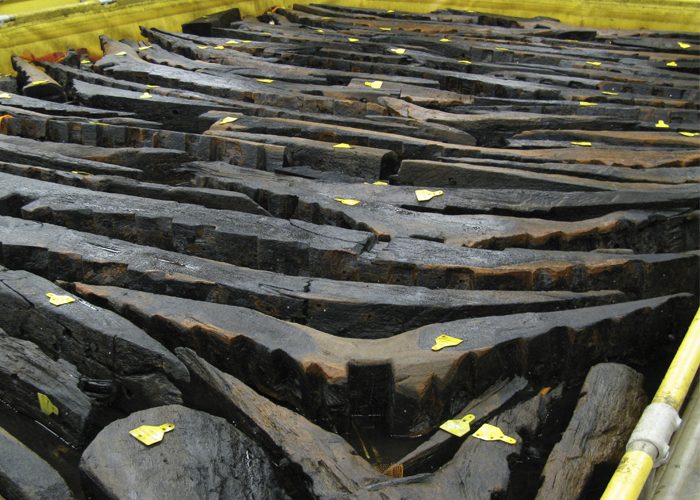Conservation
Treating waterlogged wood can be tricky. After the timbers had been cleaned and recorded the team started the active conservation process. The wood from the Newport ship was contaminated with iron corrosion products, due to the corrosion of the thousands of iron clench nails. If the wood had been left in this state it would have encouraged further decay, causing problems in years to come when reassembling and displaying the ship. To deal with this issue the timbers were soaked in a solution of ammonium citrate for several months. This allowed the soluble iron salts to be dissolved (chelated) and washed out.
The timbers were then soaked in an increasingly concentrated solution of the synthetic wax polyethylene glycol. The PEG replaces some of the water in the timbers, and acts as a cryo-protectant during the subsequent freeze-drying. This process was a lengthy one and took many years.
After soaking in PEG, the timbers were placed in a giant vacuum freezer dryer, which removed remaining water from the timbers in a process called sublimation. Each batch took three to six months to be dried. After completing the freeze-drying treatment for the several thousand timbers, they are now all dry, strong and stable and are stored in large, insulated rooms in the ship centre in Newport. Climate-control ensures their long-term preservation, awaiting their eventual re-assembly.

